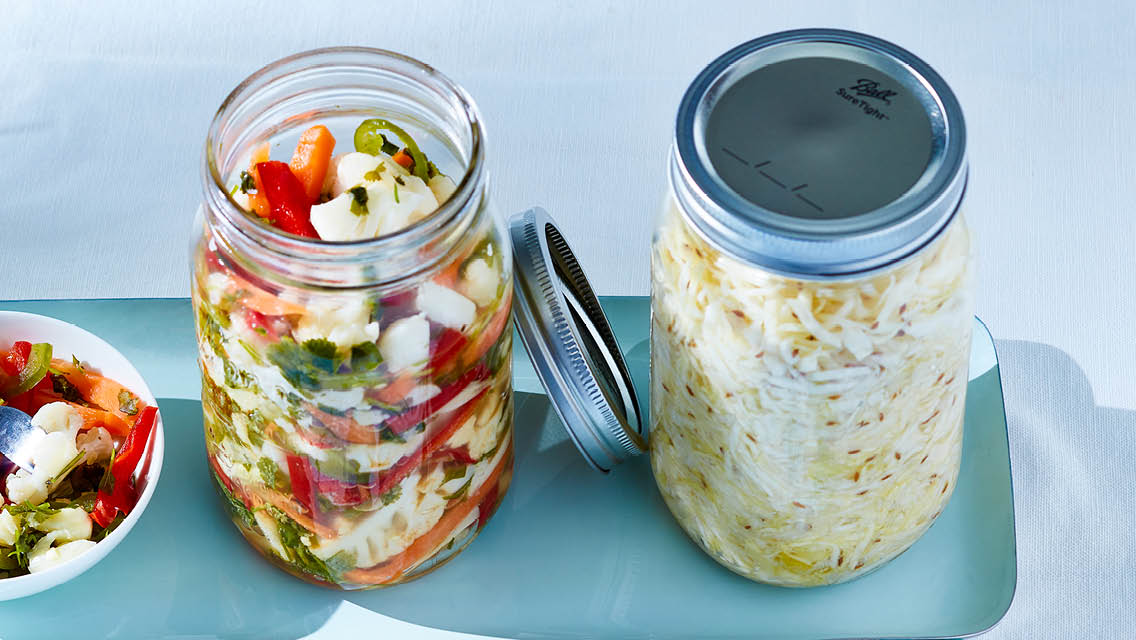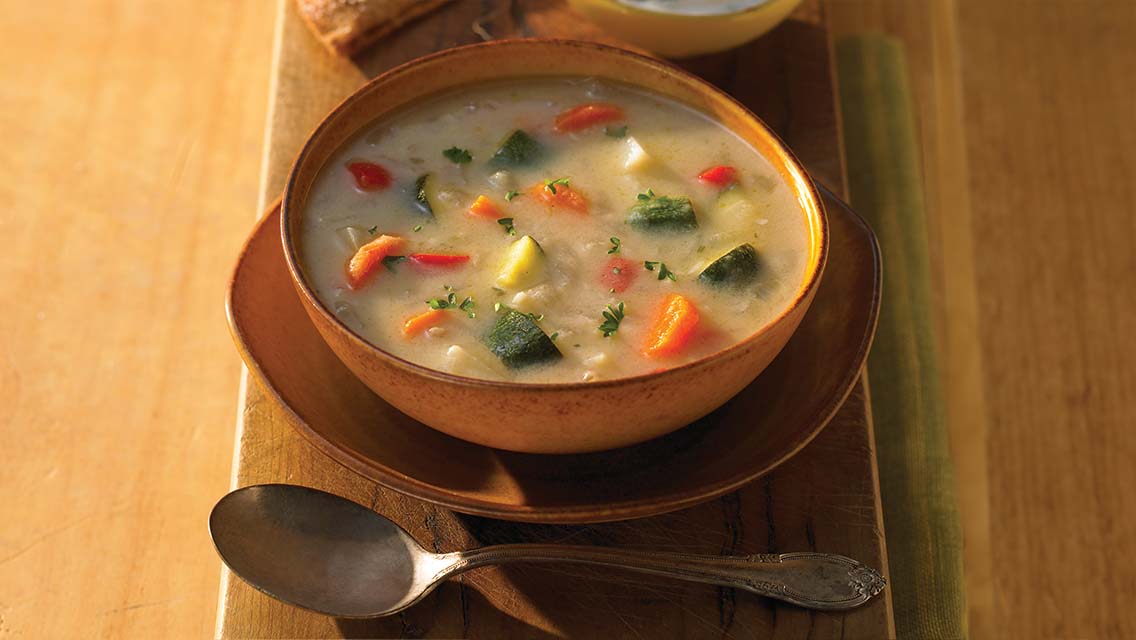When I recall the deep winter of my childhood, I can almost smell pork bubbling in a big pot on the stovetop. My half-German mom would toss it with browned onions, apples, and sauerkraut, and let it all cook together until the pork fell off the bones and it simmered into a tangy wonder. It was just about the best thing I could imagine coming home to after a day of sledding. I never gave a thought to the sauerkraut in it; you don’t think about those things as a kid.
I didn’t stop to consider whether the sauerkraut was a live product of spontaneous fermentation, as it had been for the hundreds of years Europeans had been making it, or whether it was a sterile and shelf-stable product of the type that became popular after World War II.
“Shelf-stable” was a term I never knew as a kid. I didn’t know there was a time when most food went bad — flour, pickles, you name it. I didn’t know that only with refrigeration (popularized after World War II) and pasteurization (after states began passing mandatory dairy pasteurization laws in 1947) did we get the sterile-food world we live in today.
And I definitely didn’t know that cabbage left all by itself in a salt brine will turn into sauerkraut, that the process is called fermentation, and that it’s made possible by good bacteria. This world of good bacteria also turns grape juice into wine, milk into cheese, meat into salami, soybeans into tempeh, and cacao beans into chocolate. It keeps us alive: Our bodies are colonized by several pounds of good bacteria that support our immune systems.
I started to understand all this because of sauerkraut and Sandor Katz.
Katz is a fermentation guru. He grew up in New York City and was on a high-energy path of city life and politics when he was diagnosed with HIV. He decided to retreat to rural Tennessee to try to heal himself with good food and a mellower lifestyle. There he discovered fermentation and all the digestive benefits of live-cultured foods. His 2003 book, Wild Fermentation, literally changed the way I look at food.
The book did this for a lot of people. I can’t possibly count the pickle entrepreneurs, kombucha brewers, beer makers, and chefs whom the book inspired. I don’t know how to put this strongly enough: Before Katz, homemade pickles were a restaurant rarity.
Today, fermented delicacies are everywhere, and cucumber pickles are but the tip of the pickle iceberg. I was in a fancy restaurant recently where the side dish to the pork was fermented potatoes. That tangy pile of spuds may as well have carried a sign: “Sandor Katz was here.”
Katz just released a new edition of his book, so I got on the phone faster than a pickle launched from a slingshot to ask him what it’s been like to watch his own fascination with pickles transform America’s culinary landscape.
“I wouldn’t say I’ve done this,” he tells me. “I’d say I had good timing. After two generations of a full embrace of convenience food, people started interrogating food, and fermentation had to be a part of that. When I started talking about fermentation, I could blow people’s minds — coffee, chocolate, cold cuts, bread, condiments. So many things you eat in a ‘regular’ American diet are all a product of fermentation.
“Now I talk to people and they’re familiar with ideas like the microbiome. I see the explosion of in-house fermentation in restaurants and gastropubs, and I just love to see everyone’s inventiveness. My book was at best a catalyst.”
It wasn’t just a catalyst in this country. Since he published it, Katz has traveled around the globe with his fermentation techniques. “I’ve been to every populated continent, except Africa, teaching fermentation — and I have an invitation to Africa,” he says.
“In Indonesia, I got to see how tempeh is made in an indigenous context. I’ve been making it for 20 years, but I learned so much. When we make tempeh here, it’s always about improvising an incubation temperature to keep everything warm. In Indonesia, you can just make it at ambient temperature.
“In Italy, we harvested grapes for wine, pressed them, went to have a long lunch, and by the time we came back that same day, the juice was bubbling with fermentation. That’s how spontaneous and easy it is to make wine.
“Everywhere I’ve gone has been an affirmation of simple techniques. I can’t tell you how gratifying that is.”
The one thing Katz misses from his prepublication life is time to actually ferment his own foods. “The decade before I wrote Wild Fermentation, I spent most of my time tinkering in the garden and in the kitchen. Sometimes I miss that. Since 2013, I’ve spent a third of my time traveling.”
He recalls how satisfying it felt to have pickles and other ferments bubbling along with him in his life at that time. “It’s really enjoyable to do it, to watch the changes. Plus, it’s incredibly delicious,” he says.
And it’s not as difficult as you might think. “I generally encourage people to start with fermenting vegetables. You don’t need any starter cultures; you don’t need special vessels — just a quart-size Mason jar. You can just go to the supermarket, buy a head of cabbage, and start. You can enjoy your fermentation in a week.”
If you start your fermentation experiments with a cabbage, you’ll end up with sauerkraut and be doing just what Katz will be doing this spring, when he’s teaching fermentation in Berlin.
“Are you bringing sauerkraut to Germany?” I ask, incredulous, when he tells me of his plans.
“Obviously I’m not bringing sauerkraut to Germany,” Katz laughs. “I’ve heard from a lot of German people, and sauerkraut is everywhere, but it’s almost all pasteurized now. In some cities, you’re starting to see small artisanal producers making new products.”
It’s thrilling to see this ancient art once again taking hold in Germany — and everywhere else — he says. “Wherever I go, people are rediscovering fermentation. I feel like I’m plugged into this worldwide network.”
It’s thrilling, too, to consider that after sledding this winter I could offer my own kids the same meal of sauerkraut, braised pork, onions, and apples that my mother used to make for me — including all the beneficial bacteria.
Live sauerkraut is back, thanks to Sandor Katz and a whole lot of people who were ready for it. Winter — from here to Berlin — just got a little livelier and lovelier.




This Post Has 0 Comments